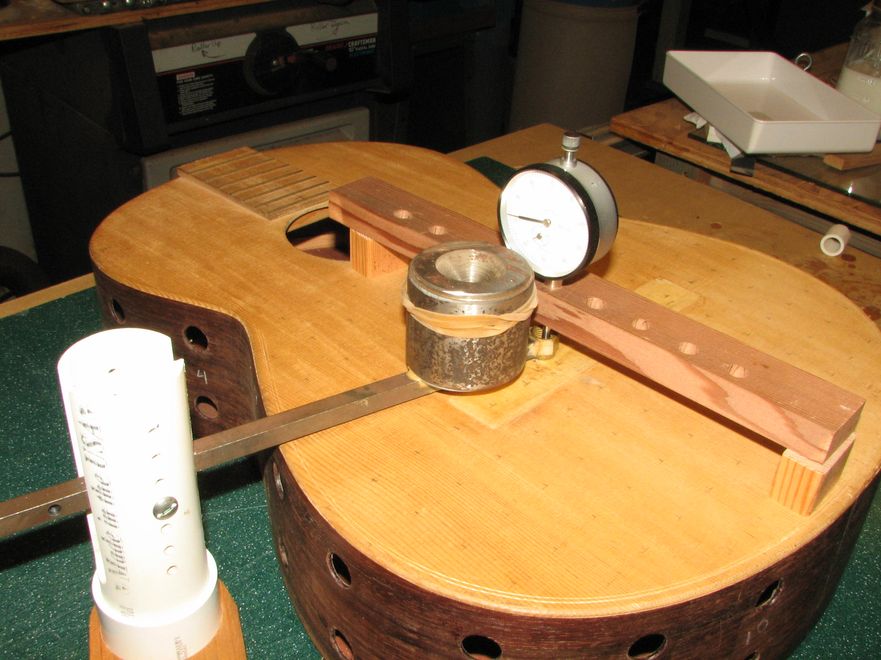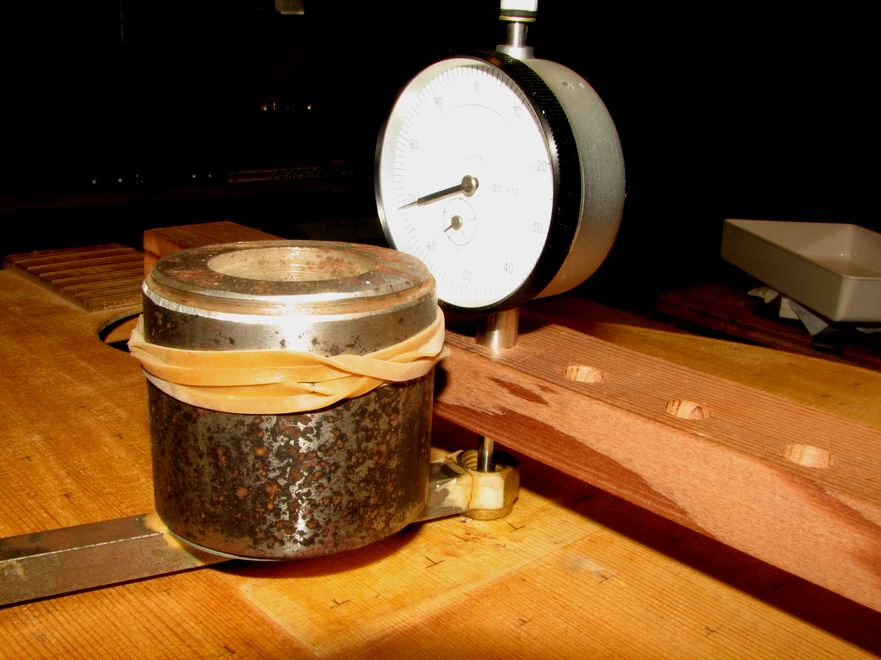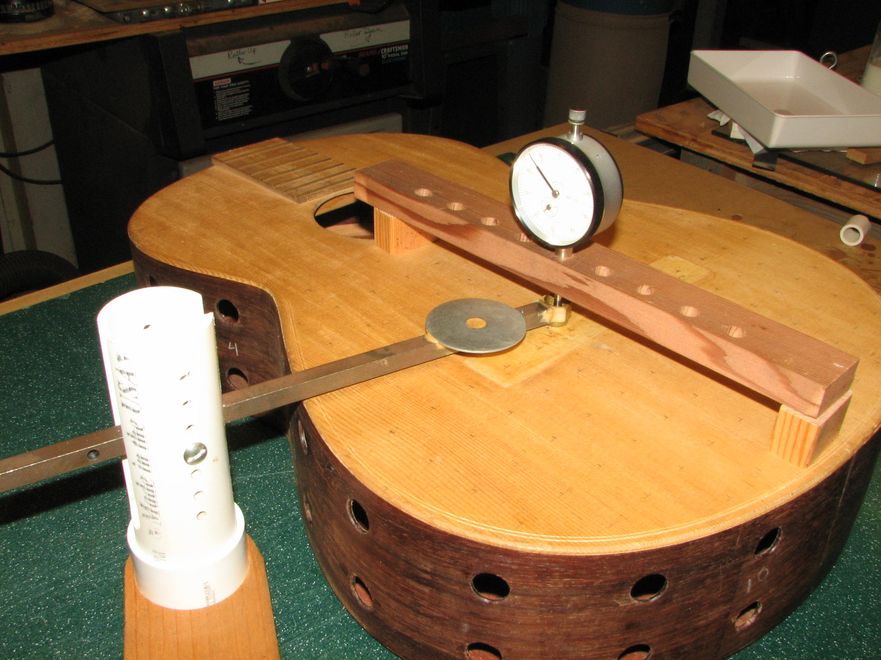So we've put the jig together and calibrated the effective weight for our deflection measurements. On to making the measurements themselves.

The first picture shows the jig with the weight in place on the instrument. Note that the legs of the dial indicator frame are resting on/near either the edge of the instrument or a strong brace. This is because we don't want to have the weight of the frame to interfere with the actual deflection measurement.
It's important to have the guitar be in a stable resting position. For me the easiest way to do this is to have made a series of small wedges which I place along the bottom surface of the instrument so that it won't wobble during measurement taking.
I usually make measurements while standing up. This allows me to look down the PVC pipe that holds the lever arm and make sure that the lever arm isn't binding during the measurement.
Deciding how many measurements to make is always an issue. For general survey work during the building process, I use a 2" grid. Sometimes, that's enough but other times I may need to try to refine a particular area and more measurements are required. For tenor and baritone ukuleles, the whole process of measuring deflections and carving braces until I obtain the "correct" deflection map rarely takes more than 20-30 minutes - a pretty small investment in time to achieve real consistency in product.
The dial indicator that I use has a 1/2" total throw. Inexpensive dial indicators are generally less accurate at the extremes of measurement so you want to have the deflection changes measured near the midpoint of the dial indicator throw. This probably means fiddling with the dial indicator frame leg lengths until you get such a range.
The reason for all the holes in the dial indicator frame is that you'll need to move the dial indicator periodically as you move from one side of the top to the other or from top to bottom. The dial indicator should be gently removed and replaced in these holes since the main stem can easily jam the indicator stem if you're not careful.
I usually put the weight down on the lever arm first for a given measurement. I put a few rubber bands near the top of the weight to make it easier to place and remove. Make sure that the dial indicator isn't touching the weight and that the dial indicator stem is in the center of the bushing.

I gently move the weight up and down a little with a fingertip to make sure that the dial indicator is moving easily and then record the reading.

Carefully remove the weight and record the second reading after gently moving the top up and down again. The difference in readings is your measurement for that particular effective weight.
aloha,